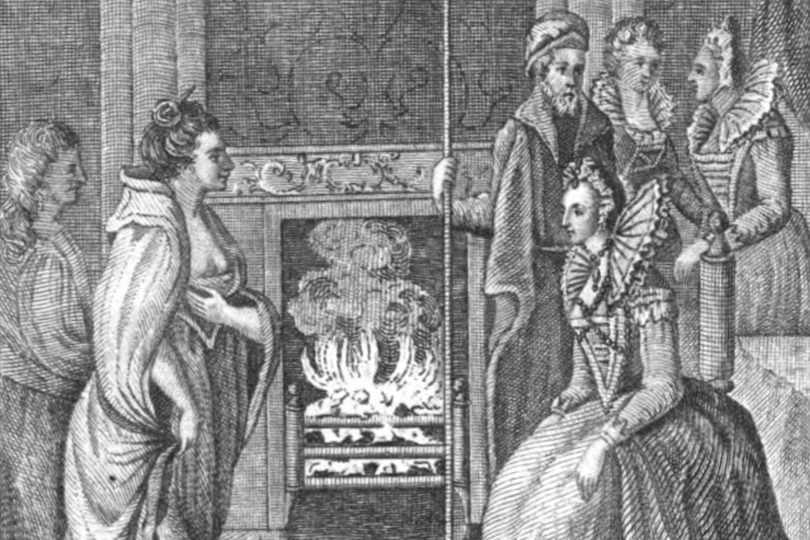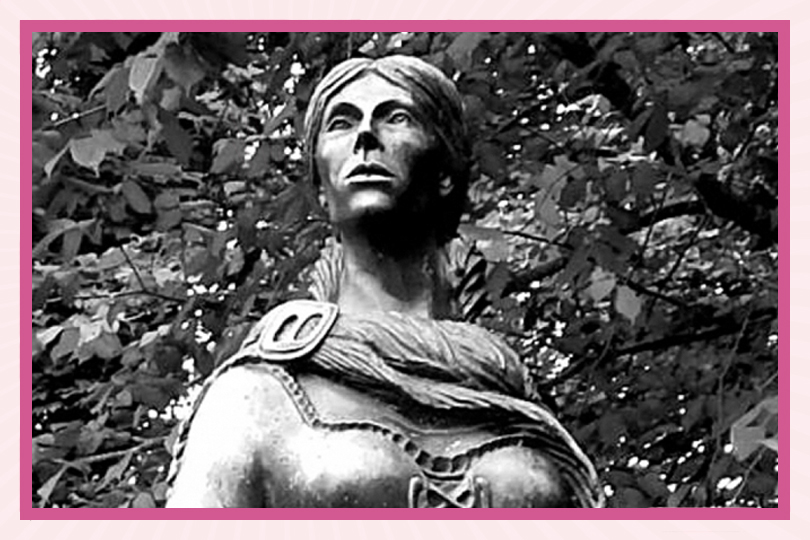Part of a new series of profiles that bring to life the forgotten stories of bold and inspiring women in history.
By Sienna Vittoria Asselin
She ruled the sixteenth-century seas as Ireland’s fierce pirate queen and did what many others didn’t dare: she stood up to the English. Read on to learn more about the fascinating life and legacy of the extraordinary Grace O’Malley.
Early years
Gráinne Ní Mháille (known in English as Grace O’Malley) was born in 1530 in County Mayo, western Ireland. The O’Malley name was an ancient one, and she could trace her ancestry back to the ninth century, to a great king that was killed by the Vikings. The family had been engaged in piracy for generations, travelling the ocean to trade, taxing others for fishing in their waters, and raiding and plundering towns and taking prisoners back with them.
Grace was the only legitimate child of her father, the mighty chieftain Dudara “Black Oak” O’Malley. He was powerful both on land and sea, ruling his territories from the seat of his impenetrable castle and at the helm of his large fleet. From a young age, Grace insisted on joining her father on his trading expeditions. When he refused to take her on a voyage to Spain, saying that a ship was no place for a girl, she grabbed a knife and chopped off her hair to look like a boy. This earned her the nickname Gráinne Mhaol, meaning “Grace the bald.”
Marriage and motherhood
Her first marriage was no love match, but a political alliance forged between two of the most powerful clans of western Ireland. In 1546, when she was about 15 years old, Grace married the heir to the O’Flaherty clan, Dónal-an-Cogahaidh. They had three children together: two sons and a daughter.
Grace was anything but a complacent housewife; everyone knew that she wore the pants in the relationship, and she quickly became the leader of her husband’s domains. She masterminded an impressive trading network to Spain and Portugal and led raids on vessels that dared to sail too close to her shores.
When Dónal was killed in an ambush by a rival clan in 1565, Grace refused to surrender his castle and successfully defended his territory. As a widow, she returned to her father’s lands with those of Donal’s men that remained loyal to her and established a base on Clare Island. There, she officially launched her career as a pirate of the high seas on her own terms.
After a brief love affair with a shipwrecked sailor, she married a second time in 1566, again for political reasons, to Richard an Iarainn Bourke. According to legend, she gave birth to their son on board one of her ships while being attacked by Barbary pirates. She rallied her men, still in pain from childbirth, and shouted out commands. She fired at her enemies with one hand and held her newborn son, wrapped in a blanket, in the other.
But by 1583 she was widowed again. In possession of her fortune, her army, and her ships, she firmly established herself at her late husband Bourke’s fortress.
Rebellion and resistance
In Grace’s time, the English government was increasingly getting their hands into Irish affairs, pushing forward an agenda of Anglicization. Old Gaelic culture, laws, language, and customs were being disrupted by the English as they tightened their grip on what they saw as their first colony.
To make a long and terribly complex story short: Grace, as a powerful Irish leader, was a problem. The English lords in Ireland and Grace were already at odds, but she made a particularly troublesome enemy out of Sir Richard Bingham, the new English governor of Connacht, and this feud would be a pain in her side for the rest of her life.
Grace pushed back against the encroaching English. And Bingham’s job was to control all the local Irish lords who had, until then, remained mostly autonomous. Bingham famously called Grace the “nurse to all rebellions in the province for this forty years.”
In 1586, she was arrested by Governor Bingham’s brother and bound by a rope, sentenced to be hanged. Her stepson successfully secured her freedom but just a month later, Bingham’s soldiers killed one of her sons from her first marriage. Heartbroken yet again, Grace led a force against Bingham, but she was lured into a trap and captured. She was sentenced to death at the age of 56 and only narrowly escaped with her life when her son-in-law persuaded the English that he would hold her in his custody and keep her out of trouble.
This was far from the truth and it took all of two seconds before Grace fought back again. Her forces continued to harass Bingham’s for years.
Game of Queens
In the early 1590s, Bingham managed to destroy part of her fleet. Furious, Grace went straight to his boss to make a formal complaint: to Queen Elizabeth I herself. She wrote the Queen a brilliant political letter, laying all the blame of recent events on Bingham.
In retaliation, Bingham captured Grace’s youngest son and accused him of treason, which was a crime punishable by death. Grace went on a mission to save her son before he was executed, appealing once again to the Queen.
Queen Elizabeth agreed to meet with Grace at Greenwich Palace in July 1593, a meeting that instantly became a thing of legends.

Grace saw herself as an equal to Elizabeth, both queens and both ageing women in a man’s world. She arrived in a magnificent gown carrying a dagger and, to the horror of everyone around, she refused to bow before Elizabeth (not accepting her as Queen of Ireland by any stretch of the imagination).
Instead of being insulted, Elizabeth was in awe of this unique woman and saw her as a kindred spirit, a female leader in a male-dominated world. To Grace’s relief, Elizabeth granted her son’s release and agreed that Grace could return to her domains and recover her losses by “maintenance by land and sea,” an authorised form of piracy.
Grace continued to lead her men on the high seas well into her sixties but by the turn of the century, the political situation in Ireland had reached a boiling point. In 1602, after the battle of Kinsale, Ireland was left to fall into English hands. Grace’s beloved Gaelic way of life was eventually destroyed and just a year after, she died at Rockfleet, the same year as Queen Elizabeth.
Legacy
Though largely forgotten in history, Grace was notorious in her time. Sir Henry Sidney, Lord Deputy of Ireland, described her as “a most famous, feminine sea captain…famous for her stoutness of courage…commanding three galleys and 200 fighting men… This was a most notorious woman in all the coasts of Ireland.”
She is partly forgotten because history has been written by men, and even though Grace was known to swear, gamble, loot and kill like the best of her men, she was still “just” a woman. But it is also because history is written by the victors, and the source material on this Irish rebel is limited. Interestingly, Grace’s name began to grow in importance with the rise of Irish nationalism in the modern age and she has been transformed into an icon of Irish resistance, standing against English domination and colonialism. Outside of Ireland, her name is still largely unknown, but it’s high time that changed.











